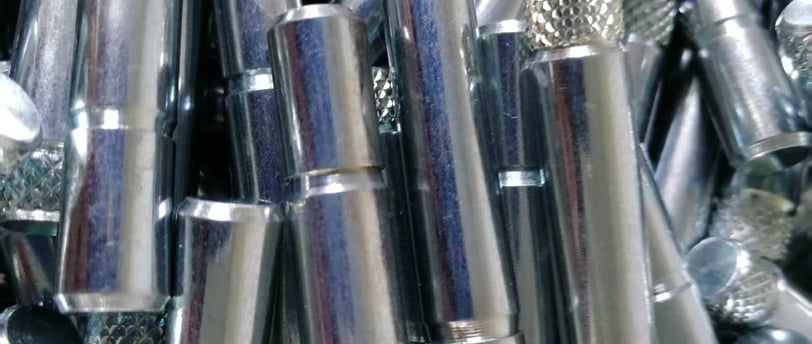Refining and Soul Casting
Exploration and Practice of Aluminum Alloy Purity Improvement
heweifeng
6/23/20253 min read


Yesterday, while reviewing technical documents, I came across an innovative method for refining aluminum alloys that greatly inspired me, prompting me to share it here. Currently, the industry predominantly employs a combination of flux refining and argon gas purification, which has significantly improved degassing and impurity removal compared to earlier single-method approaches. The conventional metric for evaluating refining effectiveness is measuring the density of aluminum samples—the higher the density, the lower the dissolved hydrogen and impurity content, resulting in superior casting quality.
However, this document introduced a more "aggressive" or perhaps more meticulous compound process: pre-treatment with hexachloroethane (C₂Cl₆) followed by argon gas refining. At high temperatures, hexachloroethane decomposes, releasing chlorine gas (excellent for hydrogen removal) and tetrachloroethylene, generating numerous tiny bubbles that strongly adsorb and carry dissolved hydrogen and fine suspended impurities to the surface. This step acts as a deep "detox" for the molten metal. Subsequent argon refining leverages the inert gas's physical scrubbing effect to eliminate residual micro-bubbles and impurities while preventing secondary hydrogen absorption. This "chemical + physical" dual approach targets ultimate alloy purity—not just hydrogen levels, but also stubborn micro non-metallic inclusions.
Equally impressive was the emphasis on a "five-stage filtration" system during pouring. Though the exact hierarchy wasn't detailed, its rigor can be imagined: from coarse to fine filtration, possibly involving ceramic foam filters, deep-bed media (e.g., glass cloth, alumina balls), and tubular filters. Each layer rigorously traps even the smallest particles, ensuring none infiltrate the mold cavity. Originally designed for large cylindrical castings, this philosophy—"eliminating all potential contaminants before they reach the casting"—holds universal value for any high-quality aluminum casting pursuit.
This reflection reshaped my understanding of casting's essence. Casting is not merely an additive process, but rather an art of subtraction in pursuit of perfection. We often assume that excelling in a few key steps guarantees quality, but reality is unforgiving: a minor oversight in one step ("the zero") can nullify nine flawless prior steps. As aptly put: "Casting is a precise process where ten perfect steps equal one qualified product, not a process where adding a zero to several perfect steps still results in one." Every stage—from charge material pre-treatment, melting temperature control, refining/de-gassing, modification treatment, furnace-side testing, to pouring temperature, speed, filtration, and even mold temperature, coating quality, and cooling rate—is an indispensable link in the quality chain. Any "good enough" compromise risks becoming the breaking point, leading to defects like porosity, inclusions, or shrinkage.
"Striving for excellence in every process step" is not just a slogan—it's the sole path to high-quality castings. Impurities won't vanish due to prior perfect steps; defects won't self-repair from good intentions. A fortress of quality is built brick by brick, each meticulously crafted.
This resonates with our common practice of blending virgin aluminum ingots with recycled scrap. While cost-effective, scrap often carries oils, moisture, oxides, and residual impurities, demanding stricter refining and filtration. The "hexachloroethane + argon" combo and "five-stage filtration" concept highlighted in the document prove invaluable here. They offer robust purification strategies to ensure alloy purity meets standards even with recycled materials, laying a solid foundation for quality castings.
Progress often begins with bold experimentation. Though hexachloroethane requires stringent safety (its decomposition products are corrosive and toxic), and five-stage filtration systems entail high costs, their underlying philosophies—"pursuit of ultimate purity" and "comprehensive control throughout the entire process"—are worth deep reflection. While full adoption may not be immediate, we can selectively adapt based on product needs, equipment, and cost considerations:
1. Evaluate Refining Intensity: For critical castings, could we enhance existing argon refining with advanced fluxes (eco-friendly alternatives to hexachloroethane) or optimize process parameters (time, flow rate, temperature)?
2. Strengthen Filtration Layers: Can we add an extra fine filtration stage or upgrade filter media grades to reinforce the final defense line?
3. Deepen Process Control: Implement rigorous furnace-side testing (density, spectroscopy, thermal analysis, reduced-pressure solidification hydrogen testing) to guide data-driven adjustments and ensure full-process stability.
"The ideal may seem distant, but what if it becomes reality?" This phrase resonates powerfully. Every advancement in casting stems from dissatisfaction with the status quo and relentless pursuit of excellence. Exploring advanced refining/filtration technologies and tightening control over every process step are the ladders leading us closer to that ideal. Even if the goal appears distant, each process optimization and qualified casting represents progress. Let this document inspire us to continuously pursue aluminum alloy purity and zero-defect casting—step by step, with dedication to each "one," transforming "qualified products" into inevitable masterpieces.